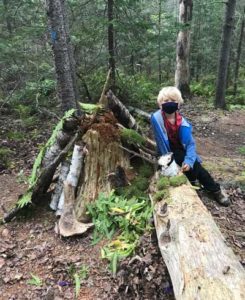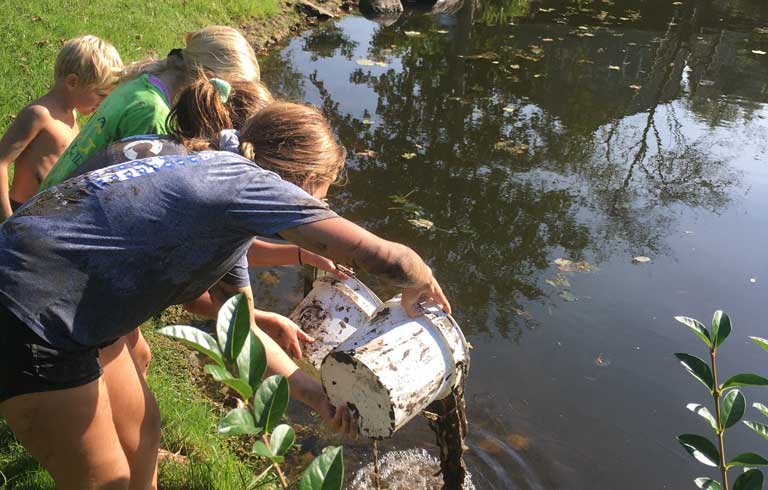Early in August, the Island Institute received an inquiry from a Southport Island community member: Are other islands facing unexpected enrollment increases this school year? How are schools responding to take extra care to physically distance when there is limited space for more students?
Enrollment increases are often a late-August conversation among island schools, when summer families consider staying on-island through the winter. This year, the conversations were more common, with a higher volume of families wanting to stay on-island, rather than moving back to more densely-populated regions with higher rates of COVID-19. Recognizing educational opportunities of small, in-person schools, some families decided to stay in Maine for the winter and enroll their children in coastal Maine schools.
“Children bring a positive and vibrant energy to the island.”
New students have boosted school populations in communities where populations were steady or declining.
Casco Bay’s Long Island added a student to the 4th grade class, a welcome addition to the elementary school with 16 kids.
Bryan Feezor, assistant principal on Vinalhaven, notes that the pre-K-12th grade school population has been on a downward trend since he began working at the school in 2011, with 166 students enrolled this year. Principal Dr. Monte Selby said some families have moved away, others have arrived on the island, and several others are working via the remote learning platform, so class sizes are about the same as last year.
The school is able to fit students in the building, even with COVID spacing and safety requirements.
“Lots of challenges, but not as a result of numbers,” Selby reported. “Overall, the students and staff here are off to an amazing start.”
Other schools did not have much extra space to accommodate physical distancing requirements, even before learning of enrollment increases. Schools have been creative and agile in developing back-to-school plans, considering hybrid options and outdoor learning opportunities.
Challenged by limited spacing and staff to accommodate the full student body, the K-8 school on the St. George

peninsula has partnered with the nearby Blueberry Cove 4-H camp to provide outdoor learning for one middle school group each day, allowing these students to experience meaningful learning and social experiences while limiting the population in the physical school building.
Islesboro Central School added 18 new students this year to its typical student body of 100. Both Islesboro and North Haven’s K-12 schools have adopted hybrid learning plans for middle and high school students to ensure adequate distancing.
School populations may have grown even higher if interested families had success securing winter housing. Potential newcomers to Swan’s Island and Isle au Haut were unable to find year-round housing before the start of the school year.
BEYOND MAINE
While increased student populations have brought challenges in planning and budgets, many community members say they bring social benefits to the schools. This trend extends beyond Maine and has occurred on the islands of the Great Lakes and Cuttyhunk, Mass.
Beaver Island Community School in Lake Michigan expected 45 students in its pre-K-12 school, yet the year started with 54 students, as seasonal families and visitors moved to the community for the winter, seeking an in-person schooling option far from high rates of COVID.
But it comes at a cost.
“Responding to COVID alone is expensive,” said Superintendent-Principal Wil Cwikiel. “At small schools, economies of scale don’t apply.” Cwikiel hired an additional full-time classroom aide, additional janitorial staff, purchased air filters and disinfectants, and anticipates higher fuel costs this winter as the school is keeping windows open to improve air flow.
The building is designed to fit 80-100 students, so the student body of 54 is not an issue. There were challenges providing high school course offerings to fit progressions for new students. For example, Beaver Island only has a certified French teacher, so the new student who studies Russian is taking his class online.
Still, Cwilkiel is glad to have the new students and families: “Our new students are a wonderful addition to our school and are really benefiting from our small class size and our individualized approach to students.”
School counselor Jess Woods works primarily with Penobscot Bay islands and confirms that small high schools often alternate or rotate course offerings, rather than offering every course every year. While this practice works well for small schools, it does offer challenges if new high school students transfer and have had a different course progression. Woods adds a positive note: “Every time a family moves to the island, there is the potential to retain them as islanders.”
Cuttyhunk, a small island near Martha’s Vineyard, has not had a student in the K-8 school since June of 2019 when the sole 8th grade student graduated. But by early September, it was clear that several families wanted to enroll their children.
The school district had to revise its budget to accommodate for a fully open school, and teacher Michelle Carvalho had little time to plan, but the positives outweigh the challenges of now having four students in grades 2-7, who now learn and socialize together.
One parent acknowledged that her child would have to be more engaged than in a large class. Another parent was grateful for the longtime year-round Cuttyhunk community.
“Many islanders have come up to me and told me how thrilled they are that the school is open again, and I have felt a great amount of support from the island community.”
Carvalho explained why: “Children bring a positive and vibrant energy to the island and we frequently engage islanders in being a part of our educational process.”
Robin Chernow is a community development officer focusing on education with the Island Institute, publisher of The Working Waterfront.





